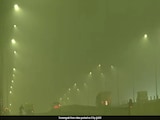Get ready for a celestial spectacle as the Perseid meteor shower, one of the most breathtaking events in the summer night sky is approaching its peak. In 2024, the Perseid meteor shower is active between July 17 and August 24 and is predicted to peak overnight from Monday, 12 August to Tuesday, 13 August, as per Guardian. The Perseids are considered the "best meteor shower of the year" by NASA, with about 50 to 100 meteors seen per hour under ideal conditions.
''With swift and bright meteors, Perseids frequently leave long "wakes" of light and colour behind them as they streak through Earth's atmosphere. The Perseids are one of the most plentiful showers with about 50 to 100 meteors seen per hour. They occur with warm summer nighttime weather allowing sky watchers to comfortably view them,'' NASA said.
When and where to watch Perseid Meteor Shower?
The radiant point of the shower is in the constellation Perseus, and the best viewing location is in the Northern Hemisphere, away from city lights. To maximize your viewing experience, try gazing at the meteors with a relaxed, peripheral vision - essentially, looking out of the corner of your eye. The best viewing times are between midnight and 5:30 a.m. on August 12-13, when the moon is below the horizon.
Dr Ed Bloomer, a senior astronomer at the Royal Observatory Greenwich said, ''Perseus is rising in the north-east as the sun's going down, and so you want to look maybe more over towards the east.''
To maximize your chances of witnessing the Perseid meteor shower, follow these tips:
- Head out to a dark location with minimal light pollution, allowing your eyes to adjust to the natural darkness.
- If you can't escape the city, position yourself away from streetlights and other sources of artificial illumination.
- Avoid gazing at your phone or any other screens, as the bright display can disrupt your night vision and reduce your ability to see faint meteors.
If you can't make it outside to witness the Perseid meteor shower in person, head over to the Virtual Telescope Project's YouTube channel. Renowned astrophysicist Gianluca Masi will be live-streaming the Perseid meteor shower, bringing the magic of the night sky directly to your screen.
What causes the Perseid meteor shower?
The Perseid meteor shower is a cosmic spectacle born from the remnants of Comet Swift-Tuttle, an ancient icy body that has been orbiting the Sun for centuries. Comet Swift-Tuttle makes a close approach to Earth every 133 years, leaving behind a trail of debris in its wake. Its last visit to the inner Solar System occurred in 1992, and now, every summer, the Earth passes through this debris field, producing the stunning Perseid meteor shower.
What is a Meteor shower?
A meteor shower is a spectacular astronomical event in which numerous small particles from space, typically fragments of comets or asteroids, enter Earth's atmosphere and burn up, producing a series of bright streaks of light in the night sky. These particles, often no larger than dust or sand, are called meteors or shooting stars, although they aren't stars at all.
Most meteors burn up completely, leaving no physical evidence behind, but occasionally, larger particles can survive their passage through the atmosphere and land on Earth as meteorites. Two of the best meteor showers of the year are the Perseids, which peak in mid-August, and the Geminids, which peak in mid-December.















